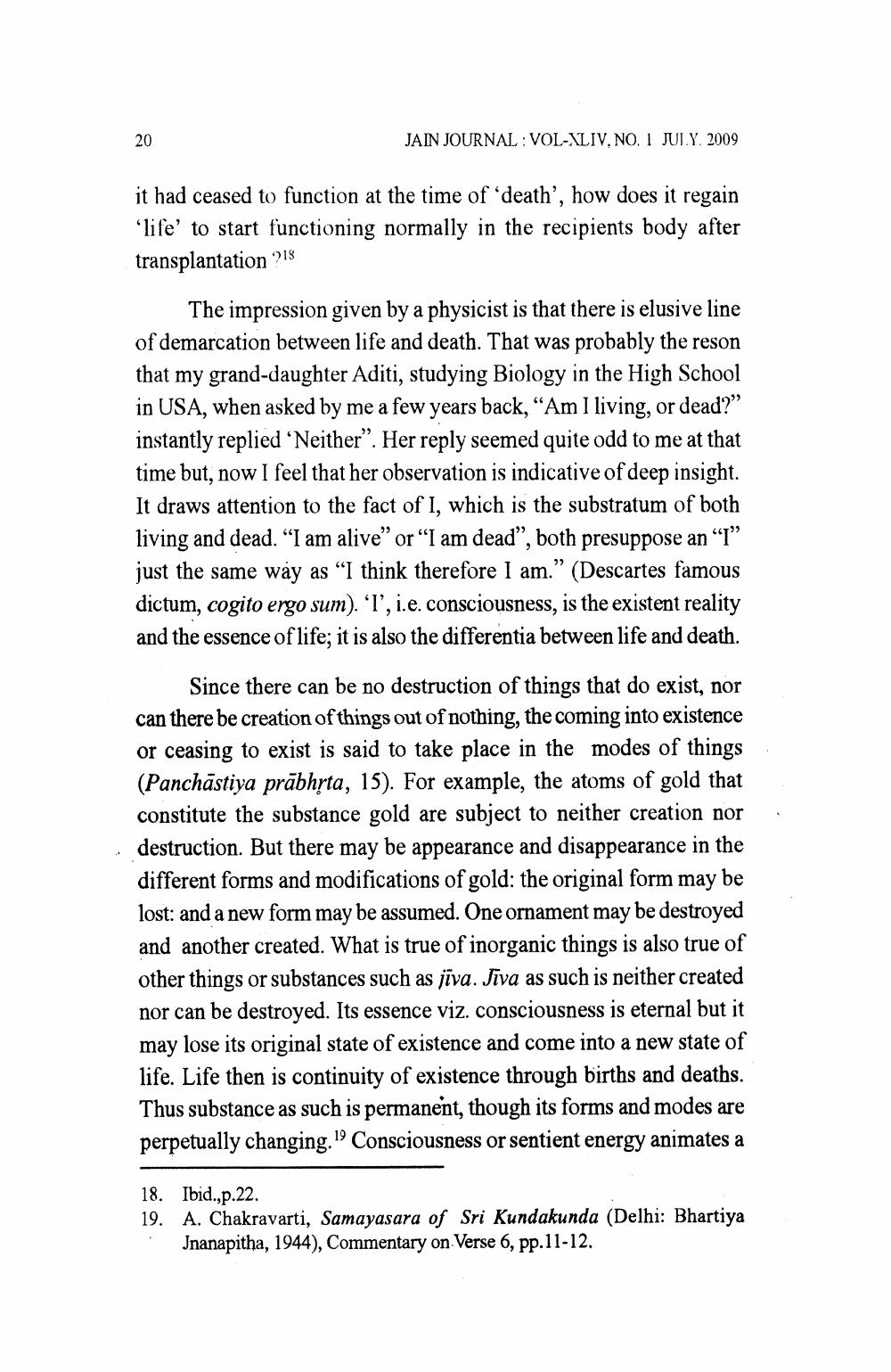________________
20
JAIN JOURNAL VOL-XLIV, NO. 1 JULY 2009
it had ceased to function at the time of 'death', how does it regain 'life' to start functioning normally in the recipients body after transplantation ?18
The impression given by a physicist is that there is elusive line of demarcation between life and death. That was probably the reson that my grand-daughter Aditi, studying Biology in the High School in USA, when asked by me a few years back, "Am I living, or dead?" instantly replied 'Neither". Her reply seemed quite odd to me at that time but, now I feel that her observation is indicative of deep insight. It draws attention to the fact of I, which is the substratum of both living and dead. "I am alive" or "I am dead", both presuppose an "I" just the same way as "I think therefore I am." (Descartes famous dictum, cogito ergo sum). 'I', i.e. consciousness, is the existent reality and the essence of life; it is also the differentia between life and death.
Since there can be no destruction of things that do exist, nor can there be creation of things out of nothing, the coming into existence or ceasing to exist is said to take place in the modes of things (Panchastiya prabhṛta, 15). For example, the atoms of gold that constitute the substance gold are subject to neither creation nor destruction. But there may be appearance and disappearance in the different forms and modifications of gold: the original form may be lost: and a new form may be assumed. One ornament may be destroyed and another created. What is true of inorganic things is also true of other things or substances such as jiva. Jiva as such is neither created nor can be destroyed. Its essence viz. consciousness is eternal but it may lose its original state of existence and come into a new state of life. Life then is continuity of existence through births and deaths. Thus substance as such is permanent, though its forms and modes are perpetually changing. 19 Consciousness or sentient energy animates a
18. Ibid., p.22.
19. A. Chakravarti, Samayasara of Sri Kundakunda (Delhi: Bhartiya Jnanapitha, 1944), Commentary on Verse 6, pp. 11-12.




